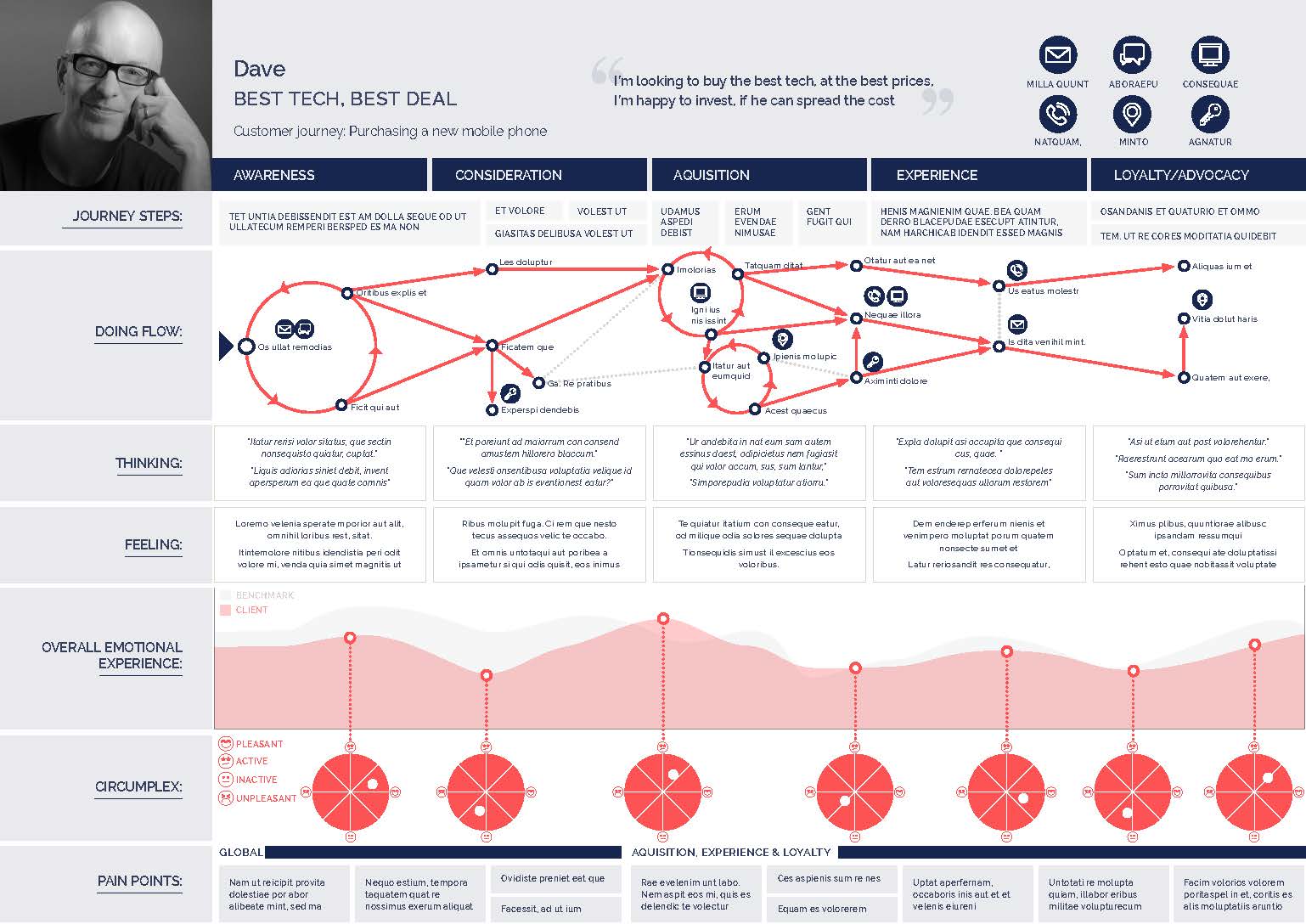We often get told by clients that they know they could improve their brand experience, but they don’t know where to start and what investment will pay dividends. It’s understandable – there’s so much that could be done, how do you work out what should be done?
Even if you’ve mapped your customers’ experience, it can often be overwhelming having identified multiple opportunities for improvement – where do you start and how do you measure the impact of the initiatives you roll out?
That’s because it’s not what you capture that is most important, it’s what you do with the insights your hard work captures.
The good news is that there are tried and tested methodologies, which can help you prioritise problems and ensure that the solutions that are delivered create the most effective outcomes for customers and for the business.
Prioritisation in real life
Practical examples always bring an article to life, so in this piece, I’ll be referencing Yell’s recent successful experience design project for Clubs NSW, ClubGrants.
ClubGrants is a program that enables local community groups to apply for funding. Since its inception in 1998, ClubGrants has given over $1 billion to deserving community causes.
ClubsNSW engaged Yell to update the ClubGrants platform and enhance the experience for all users. So, where did we start?
First, start with who is important
Your first step should be to prioritise the segments and personas you’re optimising your experience for.
Understanding impact is key to prioritisation at every stage. It’s important to understand which of your personas are most adversely affected by experience issues, as well as those who deliver the biggest impacts on your organisation.
This is achieved by drilling down to uncover layers of detail about your users, revealing their most important needs and barriers.
For ClubsNSW, we conducted segment workshops to understand who we should focus on, identifying four core segments to prioritise from a list of eight.
To really understand these segments, we created personas, identifying their needs, challenges, and motivations. Once we understood our primary customers, we co-created journey maps of their experience, both with internal stakeholders and invaluably, with end-users.
Then address what is important
Journeys capture a customer’s experience during a key interaction, or the entire lifecycle and, importantly, uncover the customer’s emotional state, mindset, needs and challenges. Below is an example of what this looks like.

Customer journey maps are a great way to understand where customer expectations don’t match the experience delivered. It’s essential that a customer journey is created for each of the prioritised personas, as there will be differences across the journeys. It’s also important to have different teams represented in the room when creating the customer journey map as it helps to build a holistic point of view and brings different insights to the table, eliminating blind spots.
Mapping a journey that incorporates validated input from customers and captures their emotional state gives you a big advantage when deciding how to prioritise what you’re going to do first.
What may seem like a relatively unimportant problem for your organisation in terms of scale or commercial impact, may have a huge emotional impact on your customers. Factoring in
Five steps
Now that the journey map has been created, it’s time to deliver big impact.
There are 5 steps involved; focus, prioritise, prototype, measure and iterate:

I’m going to discuss how we approached these with ClubGrants below.
1. Focus
The customer experience journey maps for the 4 segments revealed over 100 challenges that needed to be overcome. You can’t fix it all at once, so it’s crucial to focus. The key to deciding where to focus is to understand how much each stage of the customer journey deviates from the expected experience and the impact this has on the customer. The number of challenges faced, and the customer’s emotional response are great indicators for where to focus. For example, a customer experience map for a ‘buy now, pay later’ scheme may reveal that the customer is highly anxious after completing the purchase because they are worried they won’t make the payments on time. This post experience phase could be a great place to focus on as a result.
Our big breakthrough for the ClubGrants project came when we realised that grant applicants need a lot of assistance and assurance when completing an application. By creating an intuitive application process for the applicant that removed uncertainty, we would also significantly streamline the experience for the other key users by reducing the burden of support. This became our primary focal point for the project.
2. Prioritisation
With all projects, there are finite resources and even less time! For this reason, we conduct prioritisation exercises of key issues and opportunities to solve. It’s important at this stage that the service design elements of the experience are captured and understood, as this shows the systems that are involved that need to be taken into account when looking at the complexity of the barriers to solve. Great ideas that can’t be delivered by your organisation are just that, ideas. Capturing service design allows us to see what can be delivered now and what could be delivered if your organisation is open and able to deliver change to overcome barriers.
A great way to prioritise is to look at the ease of implementation vs the likely business impact. This is a great lens as it ensures that commercial outcomes are front and centre of decision making.
Our experience has shown us the importance of prioritising what needs to be done into quick wins and long-term plays. We’ve found that landing some key initiatives quickly is vital as it keeps the wider team engaged, maintains momentum and provides tangible outcomes for leaders and the wider organisation to acknowledge.
After we prioritised barriers and the ideas to solve them, we built a roadmap that outlined would the MPV and subsequent phases of the project. The roadmap acts as a north star for ClubGrants and ensures the wider team are onboard with the vision for optimising the experience.
3. Prototype
Over the years, we’ve found that the most successful experiences are the ones that get customer feedback throughout the process. It’s for this reason we advocate building mid-fi prototypes. ClubGrants was no different. We built mid-fi prototypes and then created missions for the different segments to test. We tracked how many clicks it took to complete the missions, the time it took and even heatmaps on where the clicks occurred. We found it a great way to test our assumptions about the intuitiveness of the experience we created and made changes to the sign-posting as a result.
4. Measurement
With a purely digital deployment, it’s relatively easy to measure the iterative impact of rational behaviour. We can see if applications increase, if support tickets reduce and in detail across the site measure user behaviour.
What often gets missed is the measurement of emotive outcomes for initiatives of this scale. This is where our journey mapping should be seen as being like any other marketing plan, or strategy. It’s important to revisit your customers’ experience on a regular basis, for example, doing an annual check-in where there has been a particular focus in activity.
We will be checking on applicants’ experience as we approach Phase 2 of the experience development project. Re-mapping to understand where issues and barriers have been solved and where we can clearly demonstrate improvements in sentiment and experience.
5. Iterate
The level of iteration will depend on how we are tracking against the key metrics. If the level of iteration required is low, it means that we can look to the next phase of the roadmap.
We hope that overview helps deliver more impact for your customer experience initiatives. If you have questions about our approach or want us to guide you and your team through the process, get in touch.









